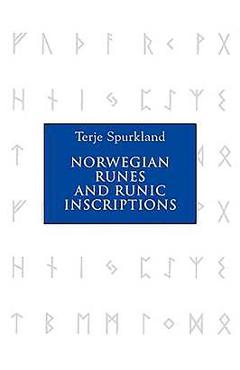Norwegian Runes and Runic Inscriptions - Terje Spurkland

Detalii Norwegian Runes and Runic Inscriptions
libris.ro
173.31 Lei
216.64 Lei
Social Science
Terje Spurkland
Norwegian Runes and Runic Inscriptions - Disponibil la libris.ro
Pe YEO găsești Norwegian Runes and Runic Inscriptions de la Terje Spurkland, în categoria Social Science.
Indiferent de nevoile tale, Norwegian Runes and Runic Inscriptions - Terje Spurkland din categoria Social Science îți poate aduce un echilibru perfect între calitate și preț, cu avantaje practice și moderne.
Preț: 173.31 Lei
Caracteristicile produsului Norwegian Runes and Runic Inscriptions
- Brand: Terje Spurkland
- Categoria: Social Science
- Magazin: libris.ro
- Ultima actualizare: 15-12-2024 01:42:32
Comandă Norwegian Runes and Runic Inscriptions Online, Simplu și Rapid
Prin intermediul platformei YEO, poți comanda Norwegian Runes and Runic Inscriptions de la libris.ro rapid și în siguranță. Bucură-te de o experiență de cumpărături online optimizată și descoperă cele mai bune oferte actualizate constant.
Descriere magazin:
Readable, enjoyable and provides a clear overview of runes and their importance to reading the past. EARLY MEDIEVAL EUROPE Runes, a unique functional writing system, exclusive to northern and eastern Europe, were used for some 1300 years in Scandinavia, from about AD 200 till around the end of the fourteenth century, when the runic alphabet finally gave way to the modern writing system. They were not written, but carved - in stone, and on jewellery, weapons, utensils and wood. The content of the inscriptions is very varied, from owner and carpenter attributions on artefacts to memorials to the deceased on erected stones; contrary to popular belief, they are not necessarily magical or mystical, and the post-it notes of today have their forerunners in such runic reminders as: Buy salt, and don\'t forgetgloves for Sigrid. The typical medieval runic inscription varies from the deeply religious to the highly trivial [or perhaps crucial], such as I slept with Vigdis when I was in Stavanger. This book presents an accessibleaccount of the Norwegian examples throughout the period of their use. The runic inscriptions are discussed not only from a linguistic point of view but also as sources of information on Norwegian history and culture. TERJE SPURKLAND is Associate Professor of Nordic Medieval Studies at the University of Oslo.

Produse asemănătoare
Produse marca Terje Spurkland

Norwegian Runes and Runic Inscriptions - Terje Spurkland
![]() libris.ro
libris.ro
Actualizat in 15/12/2024
173.31 Lei